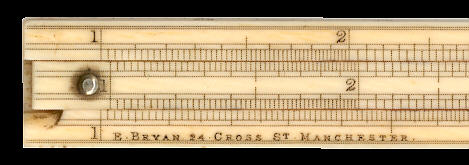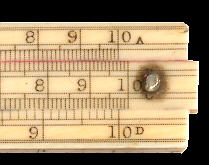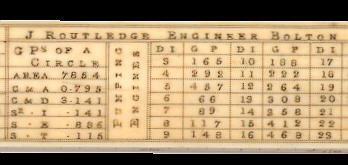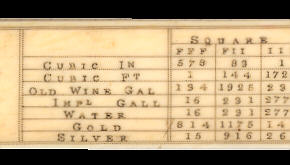2. This rule has the standard Soho configuration of A, B, C and D scales. The first three being 2-cycle logarithmic and the fourth a single-cycle scale.
3. This is the same configuration as on the Coggeshall type rule but in this format is easier to use than the Coggeshall which was a folding rule with measuring scales.
4. The detail on the back of the rule refers to "old wine gal(lon)" and "impl (=imperial) gall(on)." It must therefore have been made after 1824. However as it has both set of gauge points it was probably soon after.
5. The rule also refers to "J. Routledge, Engineer, Bolton." on the back above the gauge points. In fact, the gauge points on this rule are identical to the gauge points on my "Routledge" engineer's rule. From Manchester, where this rule was made, to Bolton, where Routledge was originally based, is a distance of 15 miles - close even in the early 19th century. (Both towns were in the county of Lancashire and in fact, the Bolton and Manchester railway opened in 1828) The table of gauge points shown, relating to piston diameter and steam at 7 pounds per square inch, would have been important as this was a period of rapid growth in cotton production in Lancashire which was powered by steam. For more details of the table see my Routledge rule.
This rule is from the collection of M Taylor.
Front view

Detail front left

Detail front right

Detail - back

Detail - back
